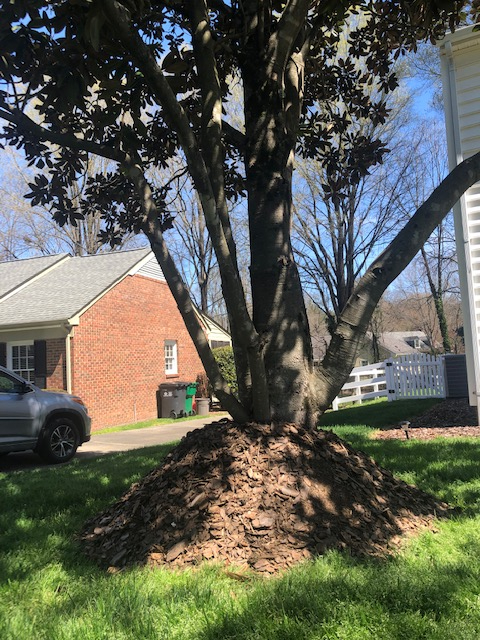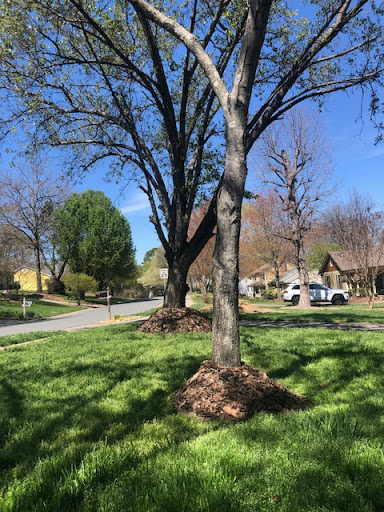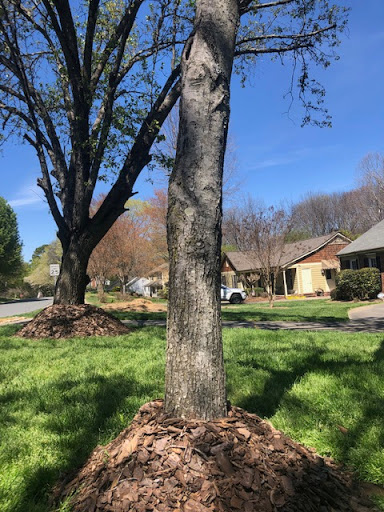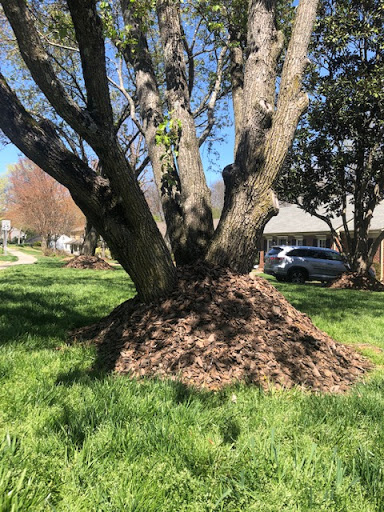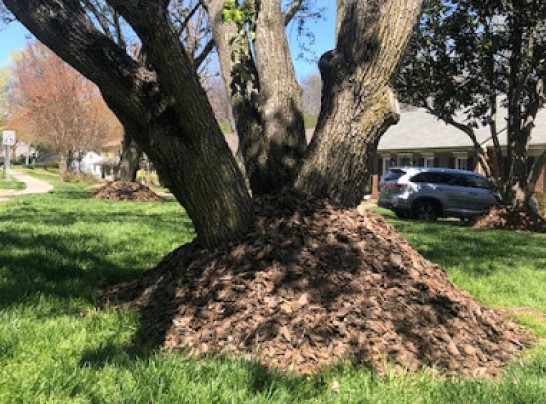Watch out for the fearsome MULCH VOLCANOES!!!
It’s that beautiful time of year again! The sun is finally out, and looks like it’s here to stay. It hasn’t gotten too insanely hot (yet), and the pollen seems to be getting a little bit less crazy (keyword, little). It’s that time when everyone is happy to be in their yards again making it a welcoming place to come at the end of the day. This brings me to my next point of concern: mulch volcanoes.
Something we see way too often and people tend to think as the golden standard for mulching their trees are “mulch volcanoes.” It looks pretty much exactly as it sounds. A huge mound of mulch piled up the trunk of a tree to where it looks like a volcano. Not quite sure where or how this trend started, but for the sake of your trees health (and your wallet’s wealth), it needs to stop. Like yesterday.
Mulch volcanoes cause damage to your tree because they don’t allow the root flare (part of the trunk that meets the ground and the roots begin to spread out) to show. This practice is like burying your tree too far into the ground which then would technically drown the tree. It creates moisture at the base of the trunk and the root flare. This confuses the roots which will then cause them to grow in a circular formation around the base of the tree (this growth of roots is called girdling roots). Girdling roots are a big issue with volcano mulch. This would then strangle the tree, create too much moisture which would allow unwanted fungus to grow, and drown it. The excess moisture caused from too much mulch on the bark of the trunk can soften the bark which would then rot the tree. Excess mulch can suffocate the main root system by depriving it of oxygen and other necessary nutrients it needs. When there is all this excessive mulch creating excessive moisture, the tree might try to root into the mulch layer which has little to no nutritional value for the tree. This would then cause the roots to dry out and die. On top of all this, the excess mulch can harbor insects and disease that can also damage the tree.
Mulch should be between 2-4 inches (NEVER exceeding 4 inches) and there should be 1-2” minimum separation between the base of the tree/ shrub and the inner edge of the mulch ring. Ideally, the mulch ring should be as wide as the canopy of the tree.
Now that you’ve become a more informed tree protector, help your trees breathe by not building mulch volcanoes around the trunk! This will also keep Heartwood from having to come out and perform root collar excavations on your trees, which will save you money!
Here is a helpful link to help explain more what were talking about:
https://www.chicagotribune.com/lifestyles/home/ct-home-0907-garden-qa-20170905-story.html
Here are some photo examples of what NOT to do:
